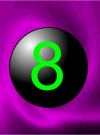Ragworth
The term Ragwort, or Ragweed, is a corruption of Ragewort, as expressing its supposed stimulating effects on the sexual organs. For the same reason the pommes d'amour (Love Apples, or Tomatoes) are sometimes called Rage apples.
Added Dec 1, 2010
| 9,402 Reads
The Ragwort (Senecio Jacoboea) is a very common plant in our meadows, and moist places, closely allied to the Groundsel, and well known by its daisy-like flowers, but of a golden yellow colour, with rays in a circle surrounding the central receptacle, and with a strong smell of honey. This plant goes popularly by the name of St. James's wort, or Canker wort, or (near Liverpool) Fleawort, and in Yorkshire, Seggrum; also Jacoby and Yellow Top. The term Ragwort, or Ragweed, is a corruption of Ragewort, as expressing its supposed stimulating effects on the sexual organs. For the same reason the pommes d'amour (Love Apples, or Tomatoes) are sometimes called Rage apples. The Ragwort was formerly thought to cure the staggers in horses, and was hence named Stagger wort, or because, says Dr. Prior, it was applied to heal freshly cut young bulls, known as Seggs, or Staggs. So also it was called St. James's wort, either because that great warrior and saint was the patron of horses, or because it blossoms on his day, July 25th: sometimes also the plant has been styled Stammer wort. Furthermore it possesses a distinct reputation for the cure of cancer, and is known as Cankerwort, being applied when bruised, either by itself, or combined with Goosegrass. Probably the lime which the whole plant contains in a highly elaborated state of subdivision has fairly credited it with anti-cancerous powers. For just such a reason Sir Spencer Wens commended powdered egg shells and powdered oyster shells as efficacious in curing certain cases under his immediate observation of long-standing cancer, when steadily given for some considerable time. A poultice made of the fresh leaves, and applied externally two or three times in succession "will cure, if ever so violent, the old ache in the hucklebone known as sciatica." Chemically the active principle of the Ragwort is "senecin," a dark resinous substance, of which two grains may be given twice or three times in the day. Also the tincture, made with one part of the plant to ten parts of spirit of wine (tenuior), may be taken in doses of from five to fifteen drops, with a spoonful of water three times in the day. Either form of medicine will correct monthly irregularities of women where the period is delayed, or difficult, or arrested by cold. It must be given steadily three times a day for ten days or a fortnight before the period becomes re-established. In suitable cases the Senecio not only anticipates the period, but also increases the quantity: and where the monthly time has never been established the Ragwort is generally found useful. This herb--like its congener, the common Groundsel--has lancinated, juicy leaves, which possess a bitter saline taste, and yield earthy potash salts abundantly. Each plant is named "Senecio" because of the grey woolly pappus of its seeds, which resemble the silvered hair of old age. In Ireland the Ragwort is dedicated to the fairies, and is known as the Fairies' Horse, on the golden blossoms of which the good little people are thought to gallop about at midnight.
Added Dec 1, 2010
| 9,402 Reads
Share The Magic ...
The GoE MONEY!!! Course - A Course In Real MONEY MAGIC!
|





















